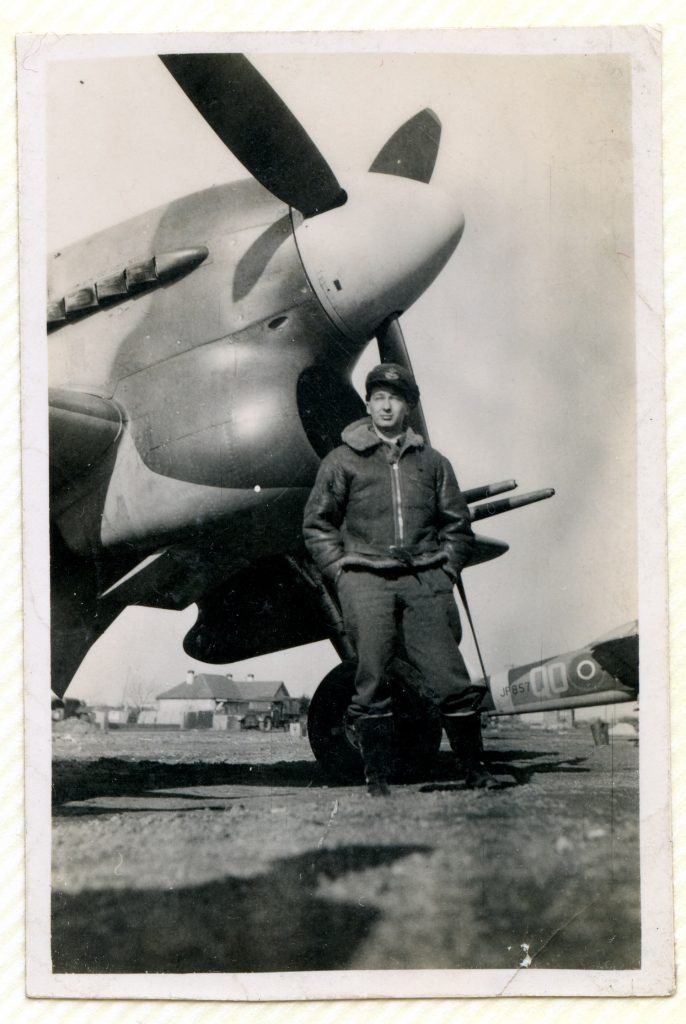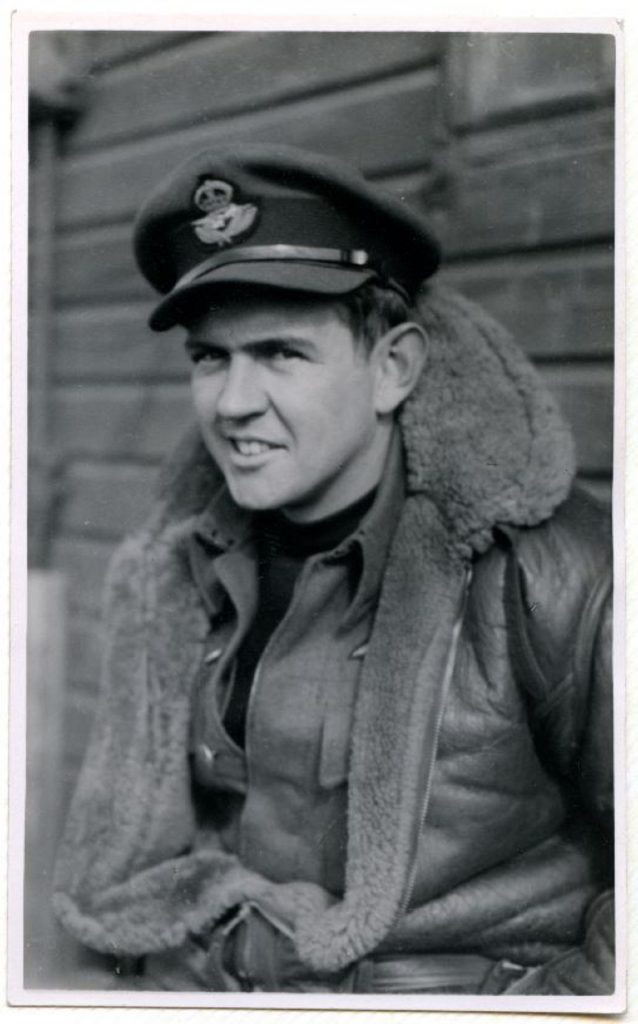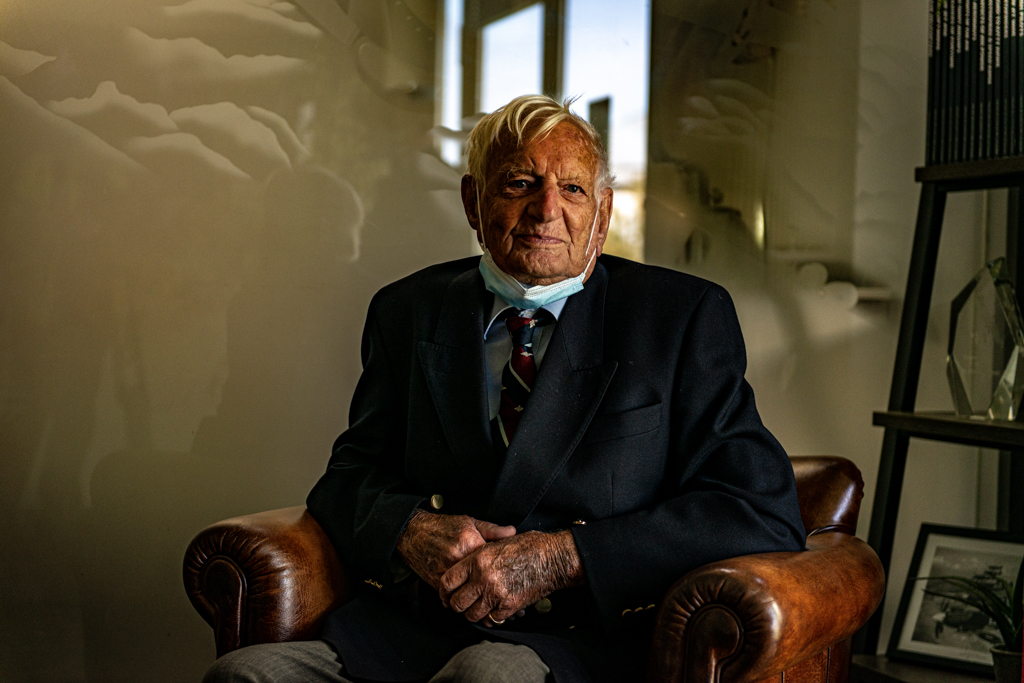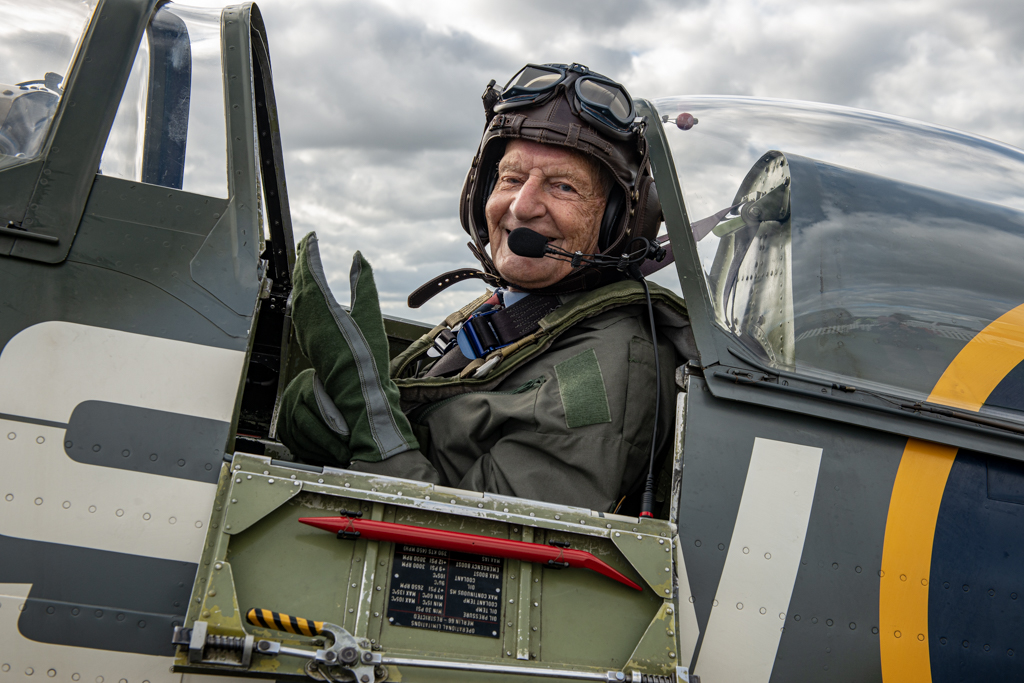The project is extremely honoured to have two former Typhoon pilots as honorary members of the Supporters’ Club and both celebrated their birthdays in April. Ron Pottinger and Bernard Gardiner turned 102 and 99 respectively with both in good health and sharp of mind.
In May 1943 Ron joined 3 Squadron which was his first introduction to the Typhoon MkIb. In early June he was given a cockpit familiarisation and sent solo on the type. The very pronounced swing to the right caught almost everyone but he learnt that immediate correction was required the “moment you opened the taps” and was impressed by the speed and handling stating “it was easy to fly”. It’s worth mentioning that 609 Squadron were also based at West Malling at this time and Ron found himself flying in the company of Jean de Selys; the chap who flew a solo attack on the SS headquarters in Brussels at ground level following the Main Street to his target.

Throughout 1943 Ron flew many ops, mainly as bombphoons, and with a high attrition rate, until in February 1944 the Tempest V’s started to come through and gradually replace the Typhoons. Ron was one of the few pilots to survive ditching a Typhoon, when he took up Typhoon R8895 for a night flying exercise and had only just left the ground when a loud thump from the engine reduced power and caused massive vibration. Although the prop struck the ground he managed to keep flying but struck the water heavily and very luckily landed the right way up before sinking quickly. He managed to get out, inflate his raft and get clear of the airframe in seconds before it sank completely with all of this taking place in the dark, icy cold water which is remarkable as few survived a Typhoon ditching.
Throughout 1944 Ron flew Tempest Vs against V1s, his tally was a very respectable six and a half kills. In September 1944 3 Squadron moved to Volkel in Holland see where the area was littered with parachutes and wrecked gliders from the invasion of Holland. Ron was in the same attack as ‘Bee’ Beaumont taking on a troop train and watched Bee hit at low-level by AA and go down. He was relieved to see him run from the crash safely. Later on, Ron and Bee met up as POWs in Stalag IIIA, Germany.
On New Year’s Eve 1944, Ron realised that he had come to the end of his tour but as the flight commander was on holiday he decided to wait and take it up with him when he returned. This was a cruel twist of fate as Ron’s next sortie near Paderborn, Germany, was to be his last as he was hit by AA at low-level whilst attacking a train. He successfully bailed out with his Tempest V coming down between two houses. He was captured and taken to Stalag IIIA, south of Berlin, where he remained until being liberated by the Russians and then the Americans. After 1 month of being a POW, he was flown back to Oakley near Oxford and then reunited with his family.

Bernard volunteered for the RAF as the Battle of Britain raged overhead, in October 1940. He served until war’s end serving with 193 and 257 Squadrons. He flew the Hurricane and latterly the Typhoon, with his first operational mission in a Typhoon on 5th October 1944, with 257 Squadron. From his logbook of the trip: “German ground troops over Goile. Rocket projectile attack”

Bernard claims that “he didn’t do much” and also that after the Hurricane the Typhoon was “quite easy to fly”. Bernard was introduced to the project through the Typhoon Entente Cordiale Trust (TECT) and was due to attend the official public launch in October 2016 as a special guest. Unfortunately, ill health did not allow him to travel on that day, but he has attended almost every project event since then, and sadly, his three comrades who did attend the launch event, have all since passed away.
Bernard is incredibly passionate about the return to flight of RB396 and said that “after the Normandy Ops everyone knew about it [the Typhoon], the Typhoon played a big role in that. At the end of the war, the Typhoon disappeared into obscurity and was forgotten about, which is a great shame; it was very sad and a great pity to see the aircraft scrapped”.
You may have seen a section on the project in More4’s documentary, “Inside the Spitfire Factory” in which Bernard is filmed giving his views on the Typhoon. He has also had many discussions with the project’s in house pilot about flying the Typhoon where he said “14’ prop and strong swing tendency, so full left rudder trim and as much left boot as possible. Then open the throttle gently!”. He went on to add that “next to the u/c selector is a small lever, which prevents the u/c being moved. Take that lever off safe before takeoff, in case of tyre burst on takeoff.”

In 2020, as a thank you for his tremendous support of the project, and to allow him to fly the one fighter that had eluded him during WWII, the Spitfire, the project arranged for him to have a surprise flight in one. It took place at Duxford with project partners Aerial Collective, almost exactly 80 years to the day that he joined the RAF. Read about that here.

The involvement of these gentlemen in the efforts to raise the funds required to rebuild RB396 cannot be overstated, to have their insight, first hand, into what the aircraft was like to operate, fly and fight is invaluable. After all, the aircraft is only the focal point of the memorial, the memorial is about the men and women who designed, built, tested, delivered, maintained, flew and fought the aircraft. It is about the people, and to have them involved in the efforts of the project team is a huge privilege. Because the memorial is for them, and their comrades.
From all at the Hawker Typhoon Preservation Group we wish them both a very happy birthday.
